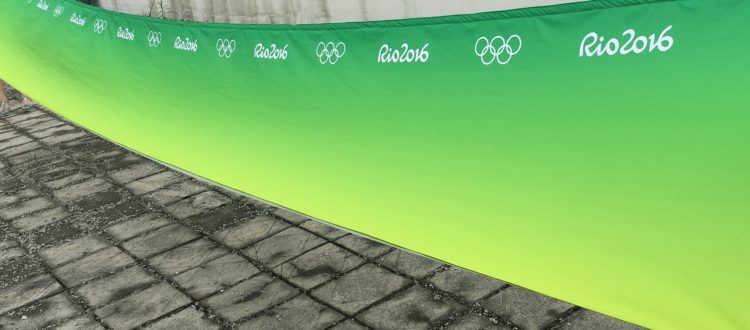Custom fabric banners are a versatile and visually appealing method of advertising that can be used for a wide range of events and purposes.
Made from high-quality fabric materials, these banners can be customized to feature any design or message, and are perfect for both indoor and outdoor use – albeit outdoor usage should be limited to events so that they don’t fade in the sun. With their vibrant colors, durable structure, and flexible sizing options, custom fabric banners are an excellent addition to any marketing or branding strategy.
What are Fabric Banners?
Fabric banners are used as a professional piece of your advertising or promotional tools that are made from high-quality fabric materials, namely polyester. They are designed to feature custom graphics, images or text and can be printed using a variety of techniques. Custom fabric banners are versatile and can be used for various purposes, including trade shows, events, storefronts, and more. They are lightweight, portable, and easy to install, making them an ideal choice for indoor and short-term outdoor displays.
What Type of Fabric is Used to Make Custom Fabric Banners?
There are several types of fabric banner materials that can be used to make custom fabric banners, and each has its unique properties and benefits. Polyester is a popular choice because it’s lightweight, durable, and affordable. Vinyl-coated polyester is another option that is water-resistant, making it ideal for outdoor use. Nylon is a lightweight and versatile fabric that is often used for indoor banners. Canvas is a heavier fabric that is less commonly used for banners, as they are cost prohibitive for some clients. Some custom fabric banners may also be made from eco-friendly materials such as recycled polyester.
What is the Best Fabric to Make a Banner
Choosing the best fabric for your custom banner depends on the specific requirements of your project. However, polyester is generally considered the best fabric for making custom banners due to its durability, affordability, and versatility. It can be printed using a wide range of printing techniques and is available in various weights and finishes. Nylon is another good choice due to being affordable like polyester.
How Do You Print on Fabric Banners?
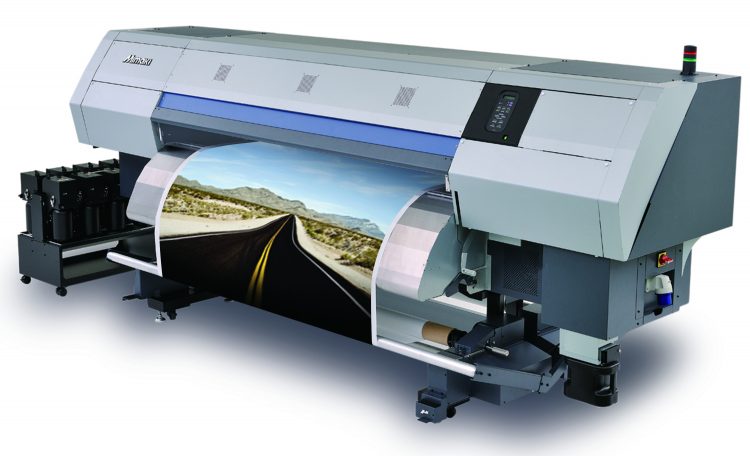 One popular technique is dye sublimation printing, which involves printing the image onto transfer paper with special dye-based inks and then transferring the image onto the fabric using heat and pressure. This method produces vibrant and long-lasting prints but can be more expensive than other options such as Direct to Fabric, or DTF, which is akin to digital printing on vinyl banners.
One popular technique is dye sublimation printing, which involves printing the image onto transfer paper with special dye-based inks and then transferring the image onto the fabric using heat and pressure. This method produces vibrant and long-lasting prints but can be more expensive than other options such as Direct to Fabric, or DTF, which is akin to digital printing on vinyl banners.
Direct-to-fabric printing involves printing the image directly onto the fabric using specialized ink printed with inkjet printers. This method is more cost-effective and produces high-quality prints, but the colors may not be as vibrant as with dye sublimation printing.
Another option is screen printing, which involves using a stencil and squeegee to apply ink to the fabric through a mesh screen. This method is best suited for larger print runs and produces durable prints, but it can be more time-consuming and costly than other options.
Whichever method is chosen, it is essential to ensure that the fabric is properly prepared and treated to ensure the best possible print quality and long life.
Fabric Banner Finishing Types
- Hem: Hemming is the most common finishing type, where the edges of the fabric are folded and sewn to prevent fraying. Hemming also reinforces the edges, making the banner more durable.
- Pole Pockets: They are created by folding the fabric and sewing it, leaving a pocket to slide a pole through. Pole pockets are ideal for hanging banners on a pole or stand.
- Grommets: These are metal rings inserted into the fabric, providing a sturdy point to attach the banner to a surface using ropes or bungee cords.
- Velcro is a popular option for banners that need to be changed frequently. Strips of “loop” Velcro are sewn onto the back of the banner, allowing it to be easily attached and removed from an appropriate “hook” surface.
- Rope sewn into the edges of the banner provides an easy way to tie it up, making it ideal for outdoor use.
Popular Sizes for Fabric Banners
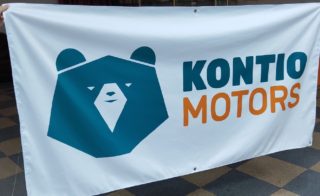 Fabric banners come in a wide range of sizes, from small tabletop banners to large outdoor banners that can cover entire buildings. However, there are a few popular sizes that are commonly used for various applications.
Fabric banners come in a wide range of sizes, from small tabletop banners to large outdoor banners that can cover entire buildings. However, there are a few popular sizes that are commonly used for various applications.
For indoor events and trade shows, small tabletop banners that measure around 2×3 feet are popular. For larger displays, banners that measure 3×6 feet are commonly used. For outdoor events and promotions, larger banners that measure 4×8 feet are popular. These banners are big enough to catch the attention of passersby and can be seen from a distance. Additionally, custom sizes can be ordered to fit specific needs and display areas.
What are the Benefits of Fabric Banners?
- Durability: Fabric banners are made from high-quality materials that are designed to withstand wear and tear, making them a durable option for both indoor and outdoor use.
- Lightweight: Fabric banners are lightweight and easy to transport, making them a popular choice for trade shows, events, and promotions.
- Vibrant Colors: Fabric banners can be printed with vibrant colors that are long-lasting and fade-resistant, ensuring that your message will be seen and remembered.
- Versatility: Fabric banners can be used for a wide variety of applications, including trade shows, events, promotions, and advertising campaigns.
- Environmentally Friendly: Fabric banners are an environmentally friendly choice, as they can be reused and recycled, reducing waste and helping to protect the environment.
- Easy to Clean: Fabric banners can be easily washed on a gentle cycle, ensuring that they look great for years to come.
- Cost-effective: Fabric banners are a cost-effective option for businesses and organizations of all sizes, as they offer a high level of visibility and impact at an affordable price.
How to Hang Your Fabric Banner
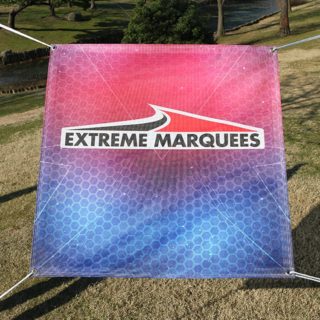
- Choose the right hardware: Determine the best way to hang your banner based on its size, location, and purpose. This may include grommets, pole pockets, or other hardware.
- Find the right location: Choose a location that is visible and easily accessible to your audience. Make sure the surface is clean and free from any debris that may interfere with the banner’s adhesion.
- Measure the space: Measure the space where you want to hang your banner and mark the spots where you want to place the hardware, if used.
- Attach the hardware: If using grommets, attach them to the banner’s corners or edges. If using pole pockets, slide the poles through the pockets. For other hardware, follow the manufacturer’s instructions.
- Hang the banner: Once the hardware is attached, hang the banner from the designated location. Make sure the banner is level and centered.
- Secure the banner: Use bungee cords, ropes, or other materials to secure the banner to the surface, ensuring it stays in place.
- Inspect the banner: Before leaving the banner unattended, inspect it to ensure it is securely hung and free from any defects that may affect its appearance or stability.
How Do You Stick Fabric Banners to the Wall?
- Clean the surface: Use a clean cloth to wipe the wall surface where you want to stick the banner. Make sure the area is free from any dirt, dust, or debris that may interfere with the banner’s adhesion.
- Choose the right adhesive: Select an adhesive that is suitable for the type of wall or window surface you’re working with. Some options include double-sided tape, removable adhesive strips, or spray adhesive.
- Apply the adhesive: Apply the adhesive to the back of the banner or to the wall surface, following the instructions provided by the manufacturer. Make sure the adhesive is evenly distributed to ensure the banner will stick properly.
- Position the banner: Once the adhesive is applied, carefully position the banner on the wall. Use a level to ensure the banner is straight and centered.
- Smooth out any wrinkles or bubbles: Gently smooth out any wrinkles or bubbles in the banner using a clean cloth or squeegee. This will help ensure the banner adheres properly to the wall surface.
- Allow time to dry: Depending on the adhesive used, allow time for the banner to dry and adhere properly to the wall surface. Follow the manufacturer’s instructions for recommended drying time.
- Inspect the banner: Once the banner and adhesive is bonded to the chosen surface, inspect it to ensure it is securely stuck to the wall or window surface. Make any necessary adjustments or reapply the adhesive if needed.
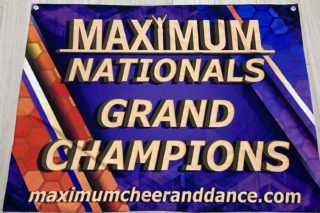
Are Fabric Banners Washable?
Whether or not fabric banners are washable depends on the type of material they are made from. Polyester, vinyl-coated polyester, and nylon are all washable fabrics, and banners made from these materials can generally be washed with mild soap and water on a gentle cycle in a front loading washing machine.
How to Remove Wrinkles from Your Fabric Banner?
If your fabric banner has been folded or stored for a long time, the wrinkles may simply be from the fabric being creased. In this case, the banner can be gently ironed on a low heat (with steam) setting with a pressing cloth to protect the material. Alternatively, the banner can be steamed using a handheld garment steamer or a steam iron. It is important to avoid applying too much heat or pressure to the banner, as this can damage the material or any prints or finishes.
What is the Lifespan of Fabric Banners?
Generally, a well-made fabric banner can last for several years with proper care and maintenance. However, banners that are exposed to harsh weather conditions, direct sunlight, or are not properly stored can degrade more quickly. Additionally, banners that are frequently taken down and put back up may experience wear and tear over time.
Are Custom Fabric Banners Safe to Use Outdoors?
These banners can be safe for outdoor use. Generally, though, banners made from durable materials such as vinyl are better-suited for outdoor use as they are weather-resistant and less likely to fade or deteriorate in harsh conditions. Additionally, banners that use UV-resistant inks and are laminated or coated for added protection can help to extend their lifespan. To ensure the safety of your custom fabric banner outdoors, it’s important to properly secure it using grommets or other hardware designed for outdoor use and to take it down during severe weather conditions.
Conclusion
Custom fabric banners are a versatile and cost-effective way to promote your brand or message, both indoors and outdoors. While they may not be as durable as vinyl banners in harsh weather conditions, they offer a softer, more natural texture that can be more visually appealing for certain events or displays.
Popular Posts:

